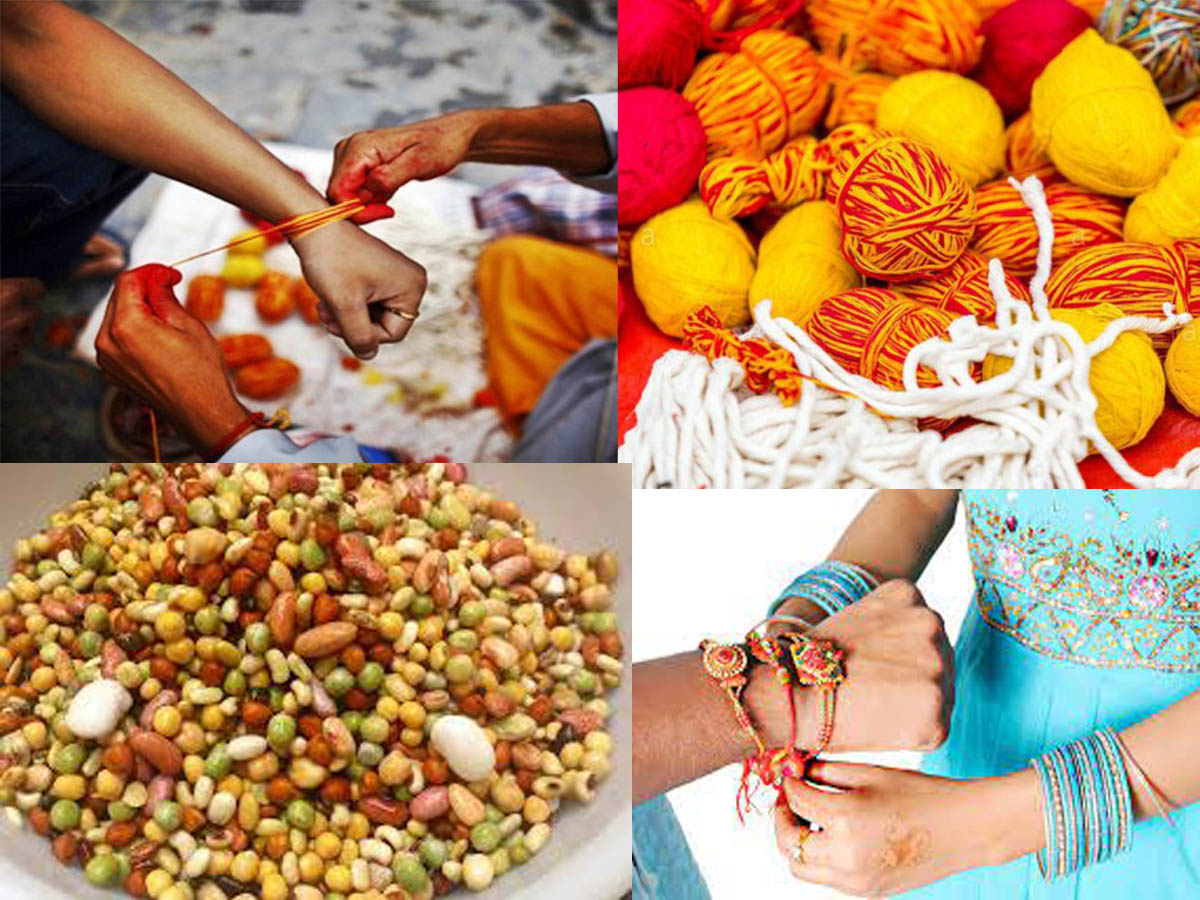
Janai Purnima, a Hindu Festival, is observed on the full moon day in Shravan month. A person wearing the Janai thread should have control over body, speech and mind. This year Nepalese will celebrate the festival on August 12.
This day is also celebrated as Rakchya Bandhan and Kwati Puni. In various places of Nepal, people celebrate it visiting the ponds and rivers taking dip. On the day before Janai Purnima, male members of the Brahmin and Chettri community cut their hair and do a clean shaving. A partial fast is observed on the day – non-vegetarian food is avoided and also food made from onion and garlic.
The Janai Purnima is performed by a priest. Verses from the holy book are chanted and the new thread is sanctified. At the end of the ceremony, the thread is placed worn by all male members.
On the same day, Rakshabandhan is observed in Nepal. In Nepal, Rakshabandhan Rakhi is tied by all people and is tied for good luck.
This year Raksha Bandhan is on August 12. However, according to the Hindu calendar it can be celebrated on two dates- both August 11 and August 12. It is celebrated on the full moon day of Shukla Paksha of Shravan month which is also known as Shravan Poornima or Kjari Poonam.
Due to the calendar and tithi, Raksha Bandhan 2022 is celebrated in two different day in India and Nepal. As the Purnmia or full moon start from today after 12, Rakchya Banndhan is celebrated today in India. However, Nepalese will celebrate Janai Punrma, Kwati Puni on 12 of August.
Janai Purnima is the sacred thread-changing ceremony observed in Nepal. Janai Purnima 2021 date is August 22. Male members of the Nepali Brahmin community and the Chettri community change the sacred thread worn by them known as Janai. The changing of the thread takes place after a long ceremony involving the chanting of mantras.
Rakchya Bandhan
Raksha Bandhan has its roots in a popular incident described in the epic, Mahabharata. Once Lord Krishna was flying a kite and cut one of his fingers with the thread. Then Draupadi tore a piece from her saree and tied it on Krishna’s finger to stop the bleeding. Moved by the gesture, Krishna promised her that he will protect her from all evils throughout his life.
These days, when sisters tie rakhi, brothers offer them gifts and sweets. Sweet dishes are cooked at home and all family members wear new clothes.
Tying the Rakhi, giving gifts, and performing aarti, are just a few of the lovely customs that accompany Raksha Bandhan. This is the time of year when families get closer and connections are stronger. The best thing about Hindu festivals is that they unite the entire family under one roof.
The festival is often observed between cousins and other distant relatives in addition to the family. The festival unites people from different ethnic and religious backgrounds, overcomes the boundaries of biological family, and stresses love and harmony via ritual. That is what makes Raksha Bandhan so beautiful.
The special occasion of Raksha Bandhan is here. It’s an opportunity to embrace sibling love and cherish the bond. India as a whole celebrates it with great enthusiasm. Raksha Bandhan is made more enjoyable by lovely rakhis, homemade sweets, presents, and puja. Any Hindu festival is incomplete without religious rituals. In Raksha Bandhan prayers are offered to god and then sisters worship their brothers and tie rakhis on their wrists while chanting the Raksha Mantra. It brings positivity and eliminate all the negative energies from his life.
According to Hindu tradition, Brahmins and Kshatriya men have been wearing Yajnopavit, i.e. Janai. After chanting the Gayatri mantra in the ears of the boy (Batuk) by the Guru-Purohit after performing the ritual vratbandha karma, it is accepted that the Guru Purohit has prepared the mantra by placing it under the right hand on the left shoulder with a firm resolve to follow the path of.
How is Kwati Punhi celebrated?
The Newar community celebrates the same day as Kwati Punhi or Gunhi Punhi or Kwati Khane Din. They tie a ‘dora’ on their wrist on this day as they do not wear Janai on their body.
They take a bath early in the morning and visit a nearby temple, where they will find a priest who ties dora. A dora is a thread just like Janai but worn on the wrist.
The next day of Janai Purnima is followed by Gai Jatra. On this day, the dora tied on the wrist is now tied on the tail of a cow. It is believed that the cow will guide the soul to heaven afterlife.
After tying the dora, Newar celebrates Gunhi Punhi or Kwati Punhi by preparing a special dish at their home. The special dish is called ‘Kwati’.
Kwati is said to bring strength and warmth to our bodies. The Kwati is prepared only on this very day, so the name Kwati Punhi occurred.
Kwati is a thick soup made up of a combination of several beans and sprouts. The variety of beans and sprouts ranges from 9 to 12 types.
The beans and sprouts are soaked in water a day earlier so that it becomes soft. Then, the next day, it is put in the pressure cooker with various spices and lots of water. After a few whistles, the Kwati is ready to be served.
Janai Purnima is a Hindu festival that is celebrated in Nepal. It is also known as the sacred thread festival. On this day, Hindus take a sacred bath in the river/home and change their Janai, which is a thread that is worn around the wrist.
FACEBOOK COMMENTS